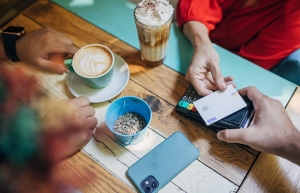Efforts made to halt decline of businesses
Prime Minister Pham Minh Chinh last week asked the Ministry of Planning and Investment to devise new policy packages that are suitable and feasible in order to provide more support for enterprises.
 |
| Some companies have reported moderate gains in recent years due to overarching economic strife, photo Le Toan |
He ordered ministries and localities to focus on “reviewing and proposing solutions to solve mechanisms and legal regulations which are overlapping or inconsistent” and make drastic cuts for administrative reform.
The message came amid the business community at large continuing to face financial struggles, which will make dents on the government’s efforts to reach the economic growth rate of 7 per cent.
“The economy is showing signals of recovery, but industrial production remains in difficulties and needs more support,” PM Chinh stated.
According to the General Statistics Office (GSO), the index for industrial production (IIP) in July increased 0.7 per cent on-month and 11.2 per cent on-year. In the first seven months of this year, the on-year IIP is estimated to have increased 8.5 per cent.
However, a close look at the figures would reveal that such a high on-year climbs in July and the first seven months were based on low on-year increases in the corresponding periods last years. Specifically, the IIP’s on-year rise in July last year was 3.7 per cent, and the seven-month IIP of the first seven months of 2023 dropped by 0.8 per cent.
Many industrial companies in Hanoi have been suffering from declines in production over the past two years.
For example, 36-year-old Nguyen Dinh Thang has been working for a Thai company producing many types of paint in Hanoi, for eight years. However, over the past two years, his company’s production has been in moderation.
The company used to produce about 300 tonnes of assorted paint a month, but the figure has reduced by half. The products are sold to car and motorbike manufacturers in Vietnam such as Honda, Suzuki, Hyundai, and Toyota, among others.
“Economic difficulties have attacked the company’s partners, whose sales have been on a downtrend,” Thang said. “Our company has had to reduce labourers. In the past, we could work extra time, but now we cannot.”
His monthly salary is around VND8 million ($330), while his wife owns a small grocery in Hanoi’s rural Soc Son district.
“Total income of our four-member family is about VND13 million ($540), which means we can only make ends meet without any savings,” Thang said.
According to the GSO, in the first seven months of this year, more than 95,200 enterprises were newly established in the period. However, the total number of businesses with halted operations and stopped performance and those waiting for completing dissolution procedures reached more than 113,500. In addition, another nearly 12,000 enterprises completed such procedures in the period, meaning great difficulties remain. On average, nearly 18,000 businesses have left the market each month.
A number of industrial sectors have witnessed an on-year drop in IIP, such as natural gas and liquefied petroleum gas (17 per cent), crude oil (7.1 per cent), mobile phones (3.2 per cent), alumina (3.1 per cent), machinery and equipment (3 per cent), and crude iron and steel (1.6 per cent), according to statistics from the Ministry of Industry and Trade.
“Industrial businesses continue facing great difficulties due to being unable to obtain bank loans even though lending rates have decreased,” said the ministry. “There has been a big rise in costs for imported input materials due to a big increase in the VND/USD exchange rate and in logistics costs. This has reduced the competitive advantage in prices of exported products.”
Vietnam’s economy was reported to have grown by 6.93 per cent in the second quarter and 6.42 per cent in the first six months of this year. The consumer price index rose by 4.08 per cent in the first half of 2024 compared to the corresponding period last year, according to the GSO.
In its latest forecast for the country’s GDP growth, the Ministry of Planning and Investment estimated that Vietnam’s economy might surpass forecasts to grow by 7 per cent this year. For one scenario, growth could hit 6.5 per cent, matching the National Assembly’s target. In a more optimistic scenario, growth could hit 7 per cent, with higher rates in the last two quarters.
To fuel domestic production, in the second half of 2024, the government will implement a fiscal policy worth about $4.08 billion, including retaining VAT at 8 per cent.
The Ministry of Finance reported that in 2023, the total values of all policies on exempting, reducing, and extending payment of assorted taxes, fees, and charges, as well as rental for land and water surface reached about $8.33 billion, including exemption and reduction of $3.3 billion and extension of $5.04 billion.
Last year, extending payment of VAT, corporate income tax, and personal income tax, as well as land rental led to a reduction in the state budget revenue of an estimated sum of $4.58 billion.
 | Central bank issues policies to support businesses The State Bank of Vietnam (SBV) has recently issued two circulars to support businesses and the real estate market in particular. |
 | Visa accelerates support for smaller businesses On November 20, Visa and the Visa Foundation made announcements on their ongoing commitment to support small and micro-sized businesses across APEC and beyond. |
 | Support rises for businesses in Tra Vinh Part of the Mekong Delta, Tra Vinh province is ramping up efforts for investment promotion and investor support to bring breakthroughs to development. |
What the stars mean:
★ Poor ★ ★ Promising ★★★ Good ★★★★ Very good ★★★★★ Exceptional
Related Contents
Latest News
More News
- Vietnam’s industrial output hits seven-year high in 2025 (January 06, 2026 | 17:47)
- GELEX’s credit rating outlook upgraded to 'Positive' by VIS Rating (January 06, 2026 | 16:49)
- Finance sector lays firm groundwork for 2026 after major reform (January 06, 2026 | 15:30)
- Vietnam’s seafood exports surpass $11 billion in 2025 (January 06, 2026 | 08:51)
- Vietnam GDP posts second-strongest growth since 2011 (January 06, 2026 | 08:35)
- Double-digit GDP growth within reach with shift to higher-value expansion (January 06, 2026 | 08:33)
- Takeda Vietnam awarded for ongoing support of Vietnam’s sustainability efforts (December 31, 2025 | 21:00)
- Vietnam's retail market tops $269 billion in 2025 amid e-commerce boom (December 31, 2025 | 19:00)
- Stronger legal framework urged as trade fraud surges online (December 31, 2025 | 18:58)
- FPT exports first chip shipment to Japan (December 31, 2025 | 10:47)

 Tag:
Tag:

















 Mobile Version
Mobile Version